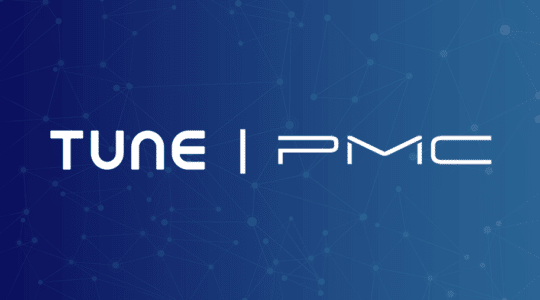
A new president was sworn in, millions of people got vaccinated (and boosted!), teachers and students returned to school, and employees returned to work — many at new companies, thanks to The Great Resignation.
With so much uncertainty in the global economy, what should the partnerships industry be prepared for in 2022?
Here are few of the top affiliate marketing trends I predict we’ll see in the year ahead.
2022 Affiliate Marketing Trends
1. Brands Will Shift Dollars Toward the Performance Model
When COVID first hit, brands pulled every marketing and advertising penny that they could, as no one knew how a global pandemic would affect the digital landscape.
Over the past year and a half, brands have shifted their advertising dollars away from traditional media buys (think CPM, CPC, pay per post, etc.), and shifted towards the affiliate or performance model, which allows brands to pay for tangible results (clicks, leads, sales, etc.).
Brands want to take buzzwords like “branding” and “exposure” and shoot them into space. A brand cannot buy anything with exposure, but most certainly can while paying to acquire a new lead or sale.
Brands have gotten a taste of paying for performance and a guaranteed ROI, and publishers may never see those guaranteed spends for unknown performance in the same way again.
2. Publishers Will Beef Up Their Performance-Driven Editorial Teams
As brands continue to shift towards a performance model, the obvious reaction is for publishers to be early adopters so that they can work with as many brands as possible.
Publishers are achieving this by staffing up their editorial teams, which are now focusing on monetizing content for these new brands in the performance space.
Reviews, listicles, and more will all get increasingly popular as brands try to monetize each and every article they put out.
3. This Year Will Be a Death Knell for PR and Earned Media
With guaranteed revenue streams no longer being “a thing,” publishers will pull their PR writers off earned media pieces, and focus more on content with monetary compensation.
Publishers will no longer have the bandwidth to create content for free, so more publishers will push brands to compensate them for their efforts, and the easiest medium to do that is with an affiliate program.
4. There Will Be Ongoing Editorial Integrity Struggles
If every publisher is trying to monetize every piece of content, we will inevitably see content that screams like a Billy Mays infomercial.
Publishers need to find that creative balance of worthwhile content their audience wants to engage with, and also drive performance (*cough sales cough*) without feeling like an ad.
5. Snackable Content Will Grow Exponentially
Thanks to social video platforms like TikTok (and Facebook, Twitter, and Instagram, etc.), snackable video content will make massive waves this year in the digital marketing space.
Instagram just recently allowed anyone to share links in their Stories, and TikTok is feverishly working on how to integrate measurable performance metrics for brands wishing to partner with their platform.
Look for snackable branded content, particularly short form video content, to grow exponentially this year, as it appeals to both the younger Millennial and Gen Z market, but also their parents, and even grandparents!
6. Programmatic Will Shift More Toward Performance
Digital companies first sold their display inventory on a website-by-website basis, and this slowly evolved to the trading desk targeting and retargeting that we are seeing today in the programmatic space.
The ability for brands to target certain target demographics is key, but a huge missing component is that true attribution piece on a source-by-source basis.
Many display networks now have the ability to adjust spend to hit target CPAs the brands set, arbitraging the CPM and CPC budgets advertisers are spending. Since these brands have other internal divisions that deal with the affiliate side, more programmatic deals will be forced to hit those performance metrics than rely on an algorithm in hopes of hitting a target KPI.
7. Influencer Marketing Will Integrate into the Performance Mix
I have seen brands get burned by influencers with a massive following charging an arm and a leg for a social media post, to not deliver one new customer for them.
I have also seen brands rely on micro- and nano-influencers to be loyal, consistent, and repetitive brand ambassadors for them.
Performance is key, and brands will look to push influencers towards more of a performance model, versus a pay per post model.
Remember that it is not the size of the influencers following, but truly how influential and engaging they are to their audience. The more organic the placement of brands within the influencer community, the more trustworthy potential consumers will be towards your brand.
8. The First-Party Data Takeover
While content can make you a king (or queen), content plus data can build you an empire.
Look for brands to directly collect whatever information about their potential customers, from email address (“Enter your email to save 15%!”), phone number (“Opt-in to receive text messages for new releases!”), and even physical addresses (shoutout to the direct mail industry still making it work).
9. Branded Promo Codes Will Be on the Rise
With more custom content around brands, publishers will want to feel like they are doing a true service to their readers by providing them with a branded promo code. This is not only important for written content, but huge for social media where it is not as easy to use affiliate links.
To prevent promo codes from landing up on a rogue coupon site, brands should make sure they are properly setting up their attribution settings.
10. Brands Will Learn to Embrace the Full Partner Ecosystem
A heads up to top, middle, and bottom funnel affiliates: brands will need all the channels to have a successful partner marketing program.
Brands that ignore entire segments of the partner ecosystem will not attract entire segments of the marketplace and will only drive up their acquisition costs for new customers.
You can run a successful program with both premium content partners and coupon partners — you just have to do it right with a healthy blend of both, depending on your performance needs.
11. Loyalty and Referral Programs Will Flourish
In 2021, 85% of customers said that customer reviews were influential to their buying decisions, along with 71% who said friends or people they know influenced their buying decisions.
By creating or growing loyalty and referral programs, brands can help solidify the notion that every customer is a potential brand ambassador.
12. Companies Will Continue to Consolidate
In 2021, we saw many companies consolidating, along with plenty of mergers and acquisitions in the digital space.
In the partner marketing space, performance agency Gen3 acquired Oak Digital, Acceleration Partners acquired Streamline Marketing, ironSource acquired Tapjoy, Dotdash acquired Meredith, and the list goes on.
Companies will double-up on existing strengths or leverage strategic partnerships to be able to provide a more robust offering.
13. The Cookieless Future is Now
Google and Apple are forever changing how third-party cookies will be utilized in the future, so the need for cookieless tracking is more important than ever before.
Google pushed back their phaseout of third-party cookies until next year to allow time for companies to plan ahead.
Brands that are not cookieless now are already behind the curve, so look for brands to quickly get educated or fall behind.
The reason for all of this? Consumer privacy. With so many data breaches over the years, consumers are demanding that their data is safe and secure, and a cookieless future will be the new normal.
What other affiliate marketing trends do you think we’ll see in 2022? Let me know in the comments below!
Author
Dan Buontempone has been in the partner marketing space since 2006, spending time on the brand, publisher, and agency sides of the business. Dan’s affiliate career has always revolved around connecting some of the best brands and publishers in the industry, and he continues to do that as TUNE’s Business Development Specialist. Nothing excites Dan more than a pixel or postback firing when it’s supposed to! Dan is forever a Long Islander and currently resides in New York’s Hudson Valley, about an hour north of the greatest city in the world.




Leave a Reply
You must be logged in to post a comment.